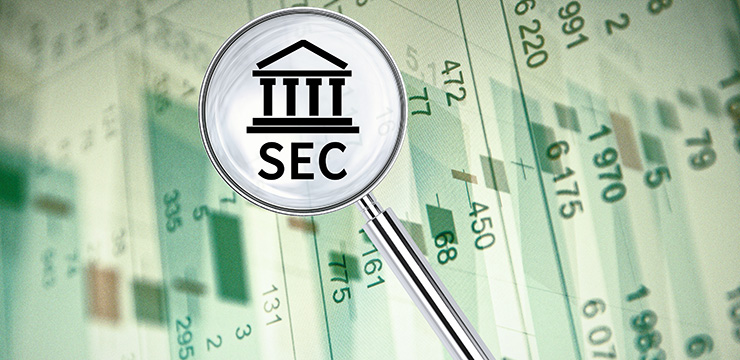Recently, the Staffs of the SEC and FINRA announced their annual examination and regulatory priorities: the SEC’s Office of Compliance, Inspections and Examinations (OCIE) issued its 2019 Examination Priorities just before its employees were sent home on furlough, and FINRA issued its 2019 Risk Monitoring and Examination Priorities Letter last week, several weeks later than its usual first-of-the-year release. The high points and overlap of the two releases are covered in an Orrick Client Alert, but for purposes of On the Chain, we will briefly discuss the two regulators’ not-surprising designation of digital currency as one of their priorities.

The priorities letters clearly telegraph both regulators’ intentions to examine firms’ participation in the digital assets marketplace. OCIE flags digital assets as a concern because of the market’s significant growth and risks. OCIE indicates that it will issue high-level inquiries designed first to identify market participants offering, selling, trading, and managing these assets, or considering or actively seeking to offer these products. Once it identifies those participants, OCIE will then assess the extent of their activities and examine firms focused on “portfolio management of digital assets, trading, safety of client funds and assets, pricing of client portfolios, compliance, and internal controls.”
For its part, FINRA treats digital assets under the heading of “Operational Risks,” and encourages firms to notify it if they plan to engage in activities related to digital assets, even, curiously, “where a membership application is not required.” In this context, FINRA references its Regulation Notice 18-20, July 6, 2018, which is headlined “FINRA Encourages Firms to Notify FIRNA If They Engage in Activities Related to Digital Assets.” These initiatives provide a partial explanation for the long-expected delays in FINRA granting member firms explicit authority to effect transactions in digital assets.
FINRA also states its intention to review these activities and assess firms’ compliance with applicable securities laws and regulations and related supervisory, compliance and operational controls to mitigate the risks associated with such activities. FINRA states that it will look at whether firms have implemented adequate controls and supervision over compliance with rules related to the marketing, sale, execution, control, clearance, recordkeeping and valuation of digital assets, as well as AML/Bank Secrecy Act rules and regulations. These issues are addressed in detail in FINRA’s January 2017 report on “Distributed Ledger Technology: Implications of Blockchain for the Securities Industry.”
The SEC and FINRA clearly will seek to align their concerns about firms participating in the digital asset markets and the compliance and supervision standards to which they will hold them. The regulators’ jurisdiction overlaps, but the SEC’s is broader – it extends to all issuers, while FINRA would be limited only to those issuers that are member broker-dealer firms. The SEC also has jurisdiction over investment advisers, while FINRA again is limited to those advisers who are members. And because the SEC effectively owns the definition of security, FINRA also states its intention to coordinate closely with the SEC in considering how firms determine whether a particular digital asset is a security. At the same time, FINRA has jurisdiction over any activities engaged in by broker-dealers with respect to its customers, even those that do not involve a security, meaning that a member firm’s transactions in or custody of, for example, bitcoin – declared by the SEC not to be a security – still will implicate FINRA’s oversight.
The regulators’ coordination on their digital currency reviews will likely not diminish regulatory attention, but at least it will provide industry participants some comfort that coordinated thought is being given to how best to regulate this emerging area.
